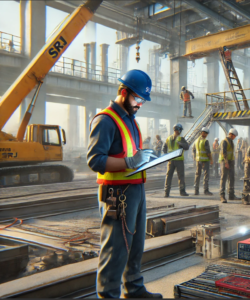Heavy Structural Fabrication: Key Benefits for Modern Construction Projects
When you think of modern construction—towering skyscrapers, expansive bridges, and massive industrial complexes—heavy structural fabrication lies at the heart of these projects. This method of creating large steel components has revolutionized the construction industry, making it stronger and more sustainable than ever before.

What Is Heavy Structural Fabrication?
Heavy structural fabrication refers to the process of cutting, bending, and assembling large steel parts to form the skeletal framework of buildings and infrastructure. This fabrication method is essential for construction projects that require superior strength, durability, and flexibility.
For an in-depth look at the structural fabrication process, read our comprehensive guide to structural steel fabrication.
Key Benefits of Heavy Structural Fabrication in Construction
1. Strength and Durability
One of the most important benefits of heavy structural fabrication is the strength and durability of steel. Steel structures can withstand high stress, environmental factors, and even seismic events, ensuring long-lasting buildings. Compared to materials like wood or concrete, steel’s resilience and long lifespan make it ideal for massive construction projects.
For more information on steel’s structural advantages, see our guide to choosing durable construction materials.
2. Cost-Effectiveness
While steel may have a higher initial cost compared to other materials, its cost-effectiveness lies in its longevity and minimal maintenance needs. Steel is lightweight, which reduces transportation costs, and it’s easy to assemble on-site, saving both labor and time. Prefabricated steel components also contribute to faster project completion.
Explore more about the cost benefits of steel fabrication in our construction materials cost analysis.
3. Flexibility and Versatility
Steel can be molded into various shapes, allowing for creative and flexible design solutions. Whether it’s curved beams or complex architectural frameworks, structural fabrication with steel enables architects and engineers to push the boundaries of design.
4. Environmental Resistance
Heavy structural steel fabrication provides excellent resistance to environmental factors. Steel is naturally resistant to corrosion, and when treated with protective coatings, it becomes ideal for construction projects in harsh environments, such as coastal areas or heavy industrial zones.
To learn more about how steel withstands environmental conditions, read our article on the environmental resilience of steel.
5. Sustainability
Steel is one of the most sustainable materials in modern construction. It is 100% recyclable, and most steel used today contains a significant amount of recycled content. This makes heavy structural fabrication an eco-friendly choice for builders looking to reduce environmental impact.
Discover more about the sustainability benefits of steel in our guide to eco-friendly construction materials.
6. Precision and Quality Control
Advanced steel fabrication techniques use technologies like computer-aided design (CAD) and automated machinery, which ensure precise manufacturing and assembly of steel components. This precision translates into safer and more reliable structures.
Find out how modern technology is transforming structural fabrication in our technology guide for construction projects.
Future of Heavy Structural Fabrication
As construction technologies continue to evolve, heavy structural fabrication is keeping pace. Advancements in automation and sustainable practices are making steel fabrication more efficient, accurate, and eco-friendly. Builders are increasingly turning to steel for long-term, sustainable projects.
To read more about the future of structural steel fabrication, explore our industry trends report.
Conclusion
Heavy structural fabrication is a critical part of modern construction. Its strength, flexibility, and sustainability make it the material of choice for large-scale projects like skyscrapers, industrial plants, and bridges. By using steel, you’re ensuring that your project is durable, future-proof, and environmentally friendly.
For more insights on how structural steel fabrication can benefit your next construction project, visit our comprehensive steel fabrication guide.
